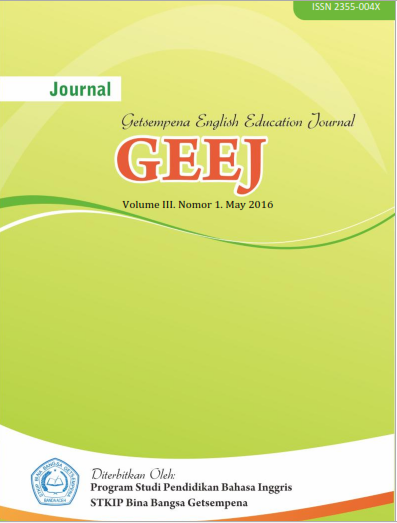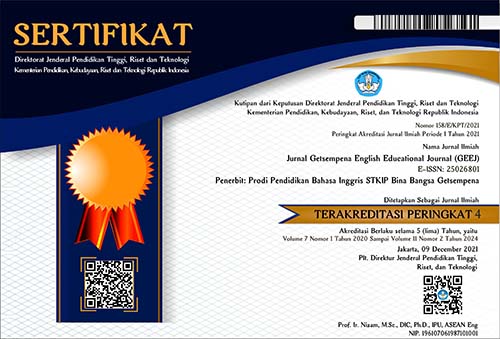STUDENTS’ PERCEPTION TOWARD WRITTEN CORRECTIVE FEEDBACK IN WRITING CLASSROOM
Abstract
The way to respond to students’ drafting is still a controversial topic in Second Language Writing training and premise. Giving written corrective feedback in the process of teaching writing is a common practice by writing teachers because it is believed to be able to help students write better. The feedback may be given directly or indirectly. The feedback may be given in the form of comments, questions, suggestions, and or corrections. It seems to be no dispute about the first three kinds of feedback. But for the corrections as the feedback in the process of teaching writing, there are two opposing views; one view believes that correction is counter-productive while the other view believes that correction is helpful. This Study aimed to explore English Department Students’ perception, beliefs, and attitude toward Written Corrective Feedback in writing classroom. Data were obtained from questionnaire and from follow up interview. The findings of an investigation on English Department Student of UIN Ar-Raniry showed that students’ preferences for feedback and error correction on their writing. Most students wished their teacher to mark and correct errors for them and believe that Written Corrective Feedback was primarily the teacher’s responsibility. Written Corrective Feedback definitely help the students in writing academic pieces better and more easily as they go through the writing process.
References
Brown, A. V. (2009). Students’ and Teachers’ Perceptions of Effective Foreign Language
Cooper, J., and Robinson, P. (1998). "Small group instruction in science, mathematics, engineering, and technology." Journal of College Science Teaching 27:383.
Cooper, J., Prescott, S., Cook, L., Smith, L., Mueck, R., and Cuseo, J. (1990). Cooperative learning and college instruction: Effective use of student learning teams. California State University Foundation, Long Beach, CA.
Gerlach, J. M. (1994). "Is this collaboration?" In Bosworth, K. and Hamilton, S. J. (Eds.), Collaborative Learning: Underlying Processes and Effective Techniques, New Directions for Teaching and Learning No. 59.
Hyland, K. (2007). “Genre Pedagogy: Language, Literacy and L2 Writing Instruction”. Journal of Second Language Writing, 16/3: 148-164
Halimi, S. S. (2008). Indonesian teachers' and students' preferences for error correction. Wacana, 10(1), 50–71.
Hamouda, A. (2011). A study of students and teachers’ preferences and attitudes towards correction of classroom written errors in Saudi EFL context. English Language Teaching, 4(3), p128.
Learning Activities Can Help L2 Writers Improve the Accuracy of Their Writing.
Linda K. Karell, 2002, Writing Together, Writing Apart: Collaboration in Western American Literature. Univ. of Nebraska Press.
MacGregor, J. (1990). "Collaborative learning: Shared inquiry as a process of reform" In Svinicki, M. D. (Ed.), The changing face of college teaching, New Directions for Teaching and Learning No. 42.
Smith, B. L., and MacGregor, J. T. (1992). "What is collaborative learning?" In Goodsell, A. S., Maher, M. R., and Tinto, V. (Eds.), Collaborative Learning: A Sourcebook for Higher Education. National Center on Postsecondary Teaching, Learning, & Assessment, Syracuse University. Teaching: A Comparison of Ideals. The Modern Language Journal, 93, 46-60.

























